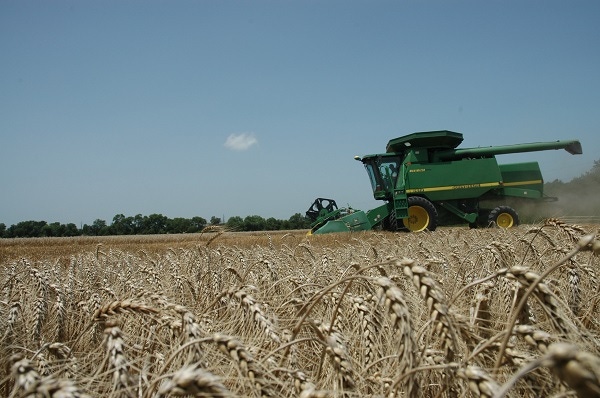July 7, 2014

Within the last two weeks, wheat prices have declined 50 cents, regained 10 cents, and then lost 18 cents. The Kansas City September wheat contract price was at $7.41 and, at this writing, is at $6.687. On May 7, the KC September wheat contract price peaked at $8.50. Is the price going to go back up? Unless things change, No!
Historically, wheat prices have declined into July/August and then rallied into November/December. During the last six years, wheat prices haven’t followed this pattern. In five of the last six years (2008, 2009, 2011, 2012, and 2013), the best times to sell wheat were in June, August, and September. During the 2010/11 marketing year, prices were highest in February and April.
For the latest on southwest agriculture, please check out Southwest Farm Press Daily and receive the latest news right to your inbox.
Historically in short crop years, prices tend to peak early. However, with the U.S. only producing about 7.7 percent of the world’s wheat crop and exporting only 17 percent of the world’s wheat exports, the marketing year price trend is normally set during the late-August/September time period. Price trends are determined more by foreign wheat production and supply than U.S. conditions.
The KC September 2014 wheat contract price has support at about $6.67 and resistance at $7 and at $7.70. Price closes below $6.67 would indicate a price target of about $6.40. Closes below $6.40 would indicate a price target of $6.09.
Oklahoma and Texas cash wheat prices are mostly 15 cents to 25 cents less than the KC September wheat contract price.
WASDE holds the key
Whether wheat prices go back up will partially depend on the Friday, July 11, World Agricultural Supply and Demand Estimates (WASDE). This report will provide the first official USDA supply and demand estimates by wheat class. Two critical estimates are hard red winter and hard spring wheat production.
A known fact is that U.S. hard red winter wheat (bread flour wheat) production will be 20 percent or more below the five-year average. Hard red spring (HRS) wheat production is expected to be average or higher, and HRS wheat ending stocks are projected to be above average. Hard red winter wheat prices are affected by HRS wheat prices.
At this writing, wheat prices are on a downward trend. To break that trend, KC September wheat contract prices must close above $7.20. To start an upward trend, prices need to close above $7.40.
The lower prices go, the higher the odds that they will go back up. Right now, the odds of Oklahoma and Texas cash wheat prices going back to $7 are only about 35 percent. Friday’s, July 11, WASDE report will change these odds.
At least 60 cents of downside risk is possible. The upside potential is in the $1.50 range. Right now, the odds favor the 60 cents down rather than the $1.50 up.
Marketing strategies include selling it all now, selling in lots of three or four between now and January 1, or selling it all now and replacing 70 percent of the wheat with KC December or March call option contracts.
Fifty cents ago, I really liked the selling and buying calls. The $7.30 calls that cost 35 cents (December) to 45 cents (March) would have lost value, but producers would have sold their wheat and still had the potential to take advantage of higher prices. This strategy will still work, but not as well.
Given the current situation, and if I could weather a 60-cent price decline, I would prefer selling in lots of three between now and January 1. If I had not sold any wheat, I would sell some of the wheat now.
About the Author(s)
You May Also Like






